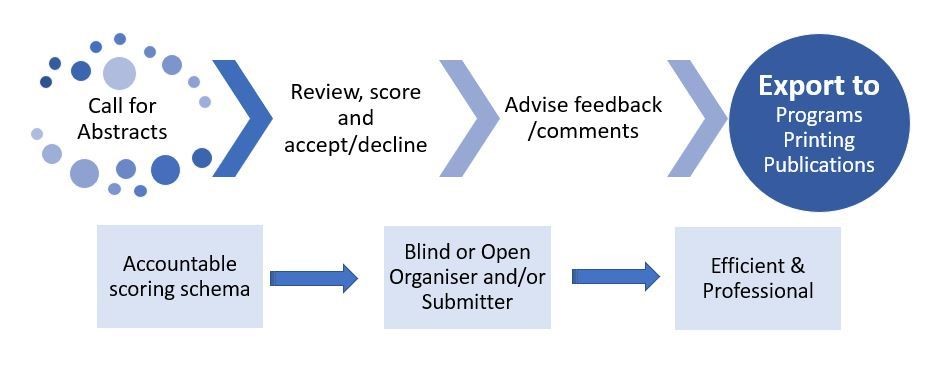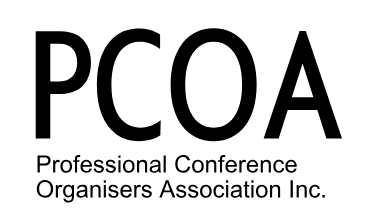
An abstract in academic circles, is a concise summary of a research paper, thesis or conference proceeding that outlines what the author is intending to talk about. In business circles it might be called an executive summary, or if it’s a book it might be a synopsis.
If you have ever submitted an abstract to a conference, your abstract will have gone through an evaluation process that determined whether it provided the content and stimulated the conversation that the conference owner was looking for, to be presented at their conference.
There’s a few things to think about when considering how you might engage in the “Call for Abstracts” process, that best serves your needs as the organiser, and the needs of the submitter, as well as reviewers. Outlined below is a typical flowchart of how this process plays out.
The key to a successful Call for Abstracts and subsequent papers, is to make the process as easy and painless as possible, particularly for submitters and reviewers. Here’s the top 5 things we hear all the time:

1. Clearly articulate the parameters that the submitter must adhere to, for their abstract to be qualified. Consider things like;
• font and line spacing
• whether images are or are not allowed
• what is the maximum word count and what is and isn’t included in the word count
• Is there specific topics or categories their content needs to apply to?
• Will they receive feedback or not?
• Any specific terms, conditions, authorities or cultural awareness information the submitter needs to be aware of and agree to.
2. How is the information submitted? How you are going to receive the abstract, will typically be determined by the evaluation process you intend to engage in. A few typical examples are email as a Microsoft Word document or PDF, or if you’re using a submission portal, perhaps they need to cut and paste into a form of some sort. Make sure your submitters know what they need to do, before they start the process.
3. Does the system you are going to use offer accountability and transparency on the scoring system? If you are going to receive submissions manually and then manually send them out to reviewers, how will you record their scores and ensure they are free from errors? Using a portal for reviewers to submit scores and provide feedback offers submitters the security that not only will their data will be kept secure and confidential, but the scoring system is efficient, fair and equitable.
4. Can you as the Organiser, seamlessly take the submissions from acceptance through to publication either online or in print? Using an integrated system is ideal, particularly if you expect to receive more than say 30 submissions. With an online system, you can set it up to avoid inconsistencies with things like emails, dates, word count and style, as well as track communications to ensure they submit from abstract to full paper if necessary and then follow through with registration. Either way, make sure your communications follow through and lead the submitter step by step.
5. Don’t underestimate the amount of communication you will need to have with your submitters. Even if you engage in the process outlined above, and decide to do it manually, you’re looking at a minimum of 6 levels of communication, and that’s assuming they have no questions and it all runs smoothly. On average, you can expect to spend at least 1 hour per submitter, in communications. Using a submission system like Conference Online allows you to submit, score, review and publish, all in the one system.
Conference Online offers Abstract Management Technology that ensures your Conference receives the highest quality submissions from the best Researchers. By offering an online submission portal like the one offered by Conference Online, you demonstrate to your community that you are committed to presenting from the best, by the best. Your system should be efficient, accountable and professional, the only thing the world’s best Researchers are looking for.
For more information on Conference Online’s Abstract Management System visit or call us on +61 7 5525 3875
